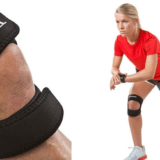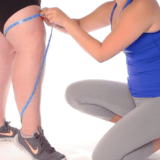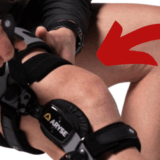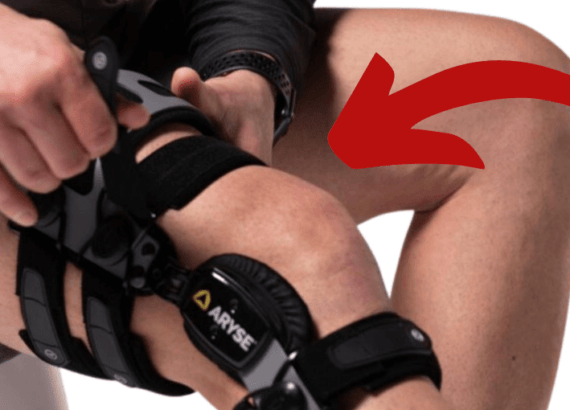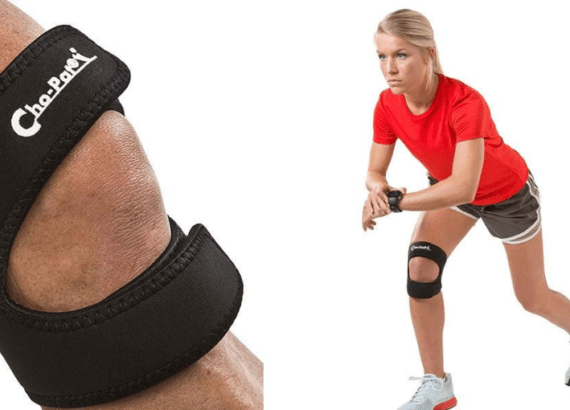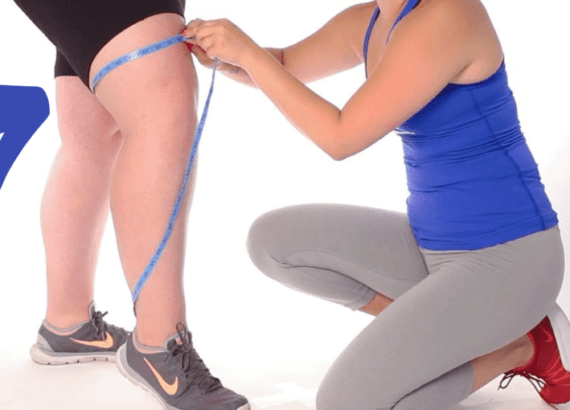How Long Should You Wear a Knee Brace in a Day- Let’s Learn
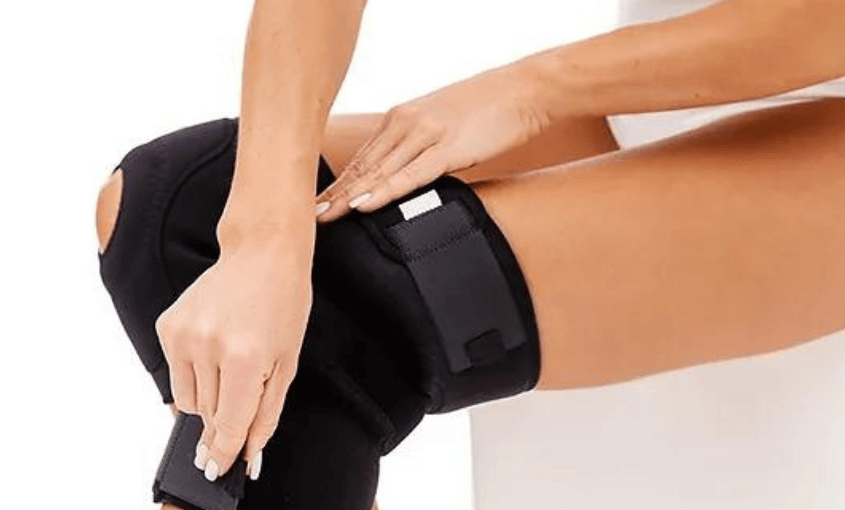
Regarding knee injuries or conditions requiring additional support, knee braces have become a popular choice.
Whether you’re recovering from knee surgery or dealing with chronic knee pain, wearing a knee brace can provide stability, alleviate discomfort, and aid in the healing process.
However, determining how long you should wear a knee brace daily can vary depending on your specific needs and circumstances.
In this article, we will explore important factors to consider when deciding how long should you wear a knee brace in a day, taking into account comfort, functionality, and the advice of medical professionals.
By understanding the guidelines and listening to your body, you can determine an appropriate duration for wearing a knee brace that supports your knee and promotes a safe recovery.
Understanding the Purpose of a Knee Brace
A knee brace is a medical device that is designed to provide support and stability to the knee joint.
Its purpose can vary depending on the specific needs of the individual wearing it. Here are some common purposes of a knee brace:
- Injury prevention: A knee brace can be used by athletes and individuals involved in high-impact activities to prevent knee injuries. It provides compression and stabilization, reducing the risk of sprains, strains, and ligament tears.
- Pain relief: Knee braces can help alleviate pain and discomfort caused by conditions such as arthritis, tendinitis, and patellofemoral syndrome. The brace can provide external support, reducing stress on the knee joint and relieving pain.
- Post-surgery support: After knee surgery, a brace may be prescribed by a doctor to aid in the recovery process. It helps immobilize the knee joint, promotes proper healing, and prevents excessive movement that could disrupt the healing process.
- Rehabilitation: Knee braces are often used as part of a rehabilitation program following an injury or surgery. They provide stability and assist in gradually increasing mobility and strength in the knee joint.
- Corrective alignment: Some knee braces are designed to correct abnormal knee alignment or biomechanical issues, such as patellar tracking disorder. These braces help realign the knee joint, reducing pain and improving function
- Stabilization: Some knee braces, such as functional or hinged braces, are designed to provide stability to the knee joint. This is particularly important for individuals with knee instability due to conditions like ligament laxity or previous injuries..
Types of Knee Braces
There are several types of knee braces available, each designed to address specific conditions and provide different levels of support. Here are some common types of knee braces:
Prophylactic or Preventive Braces
These are often used in sports activities to protect the knee from injury. They are typically lightweight and provide general support and compression, reducing the risk of ligament sprains.
Functional or Supportive Braces
These braces are used for individuals with existing knee injuries, such as ligament tears or instability.
They provide more stability and support than prophylactic braces, usually incorporating hinges and straps to limit movement and protect the injured area.
Unloader/Offloader Braces
These braces are commonly used for individuals with knee arthritis. They help to reduce pressure on the affected compartment of the knee joint, redistributing the load to other areas. This can help alleviate pain and improve mobility.
Rehabilitative Braces
Designed for post-surgery or injury rehabilitation, these braces are adjustable and provide controlled ranges of motion.
They help in gradually increasing knee movement while providing stability during the healing process.
Patellar Stabilizing Braces
These braces aim to stabilize the patella (kneecap) and improve its tracking within the knee joint.
They are often recommended for individuals with patellofemoral pain syndrome or patellar instability.
Knee Sleeves
Knee sleeves are flexible and elastic, and provide compression and warmth to the knee joint.
While they do not offer significant mechanical support, they help improve circulation, reduce swelling, and provide mild stability.
Optimal Times for Wearing a Knee Brace
The optimal times for wearing a knee brace depend on your specific condition, the type of knee brace you have, and the recommendations of a healthcare professional. Here are some common scenarios and guidelines for when to wear a knee brace:
- During physical activities: If you have a knee injury or instability, wearing a knee brace during physical activities, especially those that involve running, jumping, or twisting movements, can provide support and help prevent further injury.
- Post-surgery or injury recovery: If you have undergone knee surgery or are recovering from a knee injury, your healthcare professional may recommend wearing a knee brace during the initial stages of rehabilitation or as you gradually return to activity. This can provide stability, protect the knee joint, and promote proper healing.
- During high-impact sports: Athletes participating in high-impact sports like basketball, soccer, or skiing may benefit from wearing a preventive or supportive knee brace to reduce the risk of knee injuries due to sudden movements or contact.
- When experiencing knee pain or instability: If you have chronic knee pain or instability, wearing a knee brace during daily activities or when engaging in physical tasks that exacerbate your symptoms can provide support and help alleviate pain.
- As recommended by a healthcare professional: It’s crucial to follow the advice and recommendations of your healthcare professional or orthopedic specialist. They can provide guidance on when and for how long to wear a knee brace based on your specific condition, activity level, and recovery progress.
Balancing Brace with Daily Activities
Balancing the use of a knee brace with your daily activities is essential to ensure that you get the right support and protection for your knee while maintaining your overall mobility and functionality. Here are some tips to help you effectively integrate a knee brace into your daily routine:
Consult with a Healthcare Professional
Before using a knee brace, consult with your doctor, orthopedic specialist, or physical therapist.
They can assess your specific condition and provide guidance on the appropriate type of brace and how to use it.
Proper Brace Sizing and Fit
Ensure that your knee brace is properly sized and fitted. A well-fitting brace is essential for comfort and effectiveness. Follow the manufacturer’s guidelines for sizing and consult with a professional if needed.
Follow Usage Guidelines
Pay attention to your healthcare provider’s recommendations regarding when and how long to wear the knee brace.
There may be specific instructions for wearing it during certain activities or for a particular duration.
Gradual Introduction
If you are new to wearing a knee brace, introduce it gradually into your daily routine. Start by wearing it for short periods and gradually increase the duration as you become more accustomed to it.
Wear During Risky Activities
Consider wearing the knee brace during activities or situations that may put extra stress on your knee or increase the risk of injury.
For example, if you have a history of knee instability, wearing the brace during physical activities or sports may be advisable.
Physical Therapy
If you’re undergoing physical therapy for a knee injury or condition, coordinate with your physical therapist regarding when to wear the brace during exercises and rehabilitation sessions.
Importance of Wearing a Knee Brace
Wearing a knee brace can have several benefits and play an important role in supporting and protecting the knee joint. Here are a few reasons why wearing a knee brace can be important:
Stability and Support
Knee braces are often used to provide stability and support to the knee joint. They can help prevent excessive movement or twisting of the knee, which can be beneficial for people with weak or injured knees.
This support can help reduce the risk of further injury or provide assistance during the healing process.
Injury Prevention
Knee braces are commonly used in sports and physical activities to prevent knee injuries. They can offer protection against sudden impacts, excessive strain, or awkward movements that could potentially damage the knee.
Certain knee braces, such as prophylactic braces, are specifically designed to reduce the risk of injuries like ACL or MCL tears.
Pain Relief
People with chronic knee conditions or injuries often experience pain and discomfort. Knee braces can provide compression, help reduce swelling, and offer pain relief.
The added support provided by the brace can alleviate pressure on the knee joint, making movements more comfortable.
Rehabilitation and Recovery
After knee surgery or injury, a knee brace can assist in the rehabilitation process. It helps stabilize the knee joint, promote healing, and encourage proper alignment during movements.
Knee braces can also aid in maintaining joint mobility and preventing muscle atrophy during the recovery phase.
Increased Confidence
Wearing a knee brace can boost confidence, especially for individuals with knee problems or past injuries.
The added support and stability can give them reassurance to engage in physical activities or sports, knowing that their knees are protected.
Expert Tips for Daily Routine Integration
Integrating a daily routine can help improve productivity, reduce stress, and promote overall well-being. Here are some expert tips to help you successfully integrate a daily routine into your life:
- Set Clear Goals: Start by setting clear goals that you want to achieve through your daily routine. Whether it’s improving your physical fitness, learning a new skill, or managing your time more effectively, having specific goals in mind will give you direction and motivation.
- Prioritize and Schedule: Determine your priorities and allocate time slots in your schedule for each activity or task. Consider your energy levels and schedule your most important tasks during your peak productivity times. Stick to a consistent routine to develop a habit.
- Start Small: Don’t overwhelm yourself by trying to incorporate too many changes all at once. Instead, start small and gradually build up your routine. Focus on one or two key habits that you want to develop and work on them consistently until they become automatic.
- Be Realistic: While it’s important to challenge yourself, make sure your routine is realistic and achievable. Setting unrealistic expectations can lead to frustration and burnout. Start with small, manageable steps and gradually increase the difficulty as you progress.
- Eliminate Time Wasters: Identify activities or habits that are counterproductive or time-consuming and eliminate or minimize them. This could include excessive TV or social media usage, procrastination, or other distractions. Use that time to focus on more meaningful and productive tasks.
- Practice Self-Care: Don’t forget to include self-care activities in your routine. Prioritize activities that help you relax, rejuvenate, and take care of yourself, such as exercise, meditation, quality sleep, and spending time with loved ones.
Conclusion
Using a knee brace is just one component of a comprehensive treatment plan. Determining the appropriate amount of time to wear a knee brace in a day can vary depending on individual circumstances and recommendations from healthcare professionals.
While it is essential to follow any specific instructions given by your doctor or therapist, it is generally advised to wear the knee brace for a designated period during activities that may put strain on the knee joint.
This typically ranges from a few hours to several hours a day. It is crucial to listen to your body and monitor any discomfort or pain while wearing the brace.
If it becomes uncomfortable or causes excessive sweating or irritation, it is crucial to adjust the wearing time accordingly.
Engaging in regular exercise, muscle strengthening, and flexibility training alongside proper brace usage can further assist in knee support and rehabilitation.
Remember, the ultimate goal is always to promote healing and improve the knee’s stability, so it is recommended to consult with a healthcare professional for personalized guidance on how long you should wear a knee brace in a day.

As a dedicated medical professional with years of experience, Dr. Roksana Parveen understands the importance of taking a comprehensive approach to health and wellness. She believes in the power of education to provide evidence-based information to help individuals about their health.
More From Me
Connect with me and get latest updates. - Dr. Roksana Parveen

